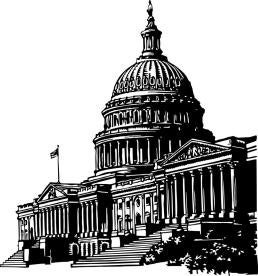Joint-Employer Extension. This week the National Labor Relations Board (NLRB) further extended the deadline for submission of comments in response to its proposed joint-employer rulemaking. Comments had been due on December 13, 2018, but now comments will be due on January 14, 2019. We suppose folks who are drafting comments might be thankful for the extra time, but the further extension (this is the second time the Board has extended the comment period) certainly does not benefit the business community. This is because while this proposal is pending, the ambiguous joint-employer standard set forth in Browning-Ferris Industries remains the law of the land.
NLRB Issues Strategic Road Map. In other NLRB news, late last week the Board issued its strategic plan for fiscal years 2019 through 2022. The plan “includes the NLRB’s strategic goals, objectives, initiatives, strategies and associated performance measures for managing operations and assessing the NLRB’s achievements.” The plan lists the Board’s four major goals (none of which are particularly surprising):
-
Promptly resolve labor disputes affecting commerce by fairly and efficiently investigating, settling, processing and adjudicating unfair labor practices under the National Labor Relations Act.
-
Promptly and fairly resolve all questions concerning representation of employees.
-
Achieve organizational excellence and productivity in the public interest.
-
Manage agency resources in a manner that instills public trust.
But behind each of these main goals are underlying objectives that might result in some procedural changes at the Board. For example, to meet the first goal above, the Board promises to “[a]chieve a collective 20% increase in timeliness of case processing under established performance measures for the resolution of all meritorious unfair labor practice charges.” In conjunction with this aspect of the strategic plan, on December 7, 2018, General Counsel Peter B. Robb issued a memorandum instructing all divisions and regions to achieve a 5 percent reduction per year in unfair labor practice case processing time. The Buzz will be curious to see how these new case processing metrics play out in the real world.
OSHA Proposes Beryllium Changes. As the Buzz predicted, this week the Occupational Safety and Health Administration (OSHA) issued proposed changes to its beryllium standard for general industry. Among the changes OSHA proposes are amendments to the standard’s “Definitions,” “Methods of Compliance,” “Personal Protective Clothing and Equipment,” “Hygiene Areas and Practices,” “Housekeeping,” “Medical Surveillance,” “Hazard Communication,” and “Recordkeeping.” Comments must be submitted by February 9, 2019.
Auer Time Has Come? It could soon be “happy Auer” for the business community, as earlier this week, the Supreme Court of the United States granted certiorari in Kisor v. Wilkie. While the case doesn’t directly involve labor or employment law, it could be a game changer for the business community. This is because the Court specifically granted certiorari on the issue of whether it should overrule Auer v. Robbins and Bowles v. Seminole Rock & Sand Co., which direct courts to defer to an agency’s reasonable interpretation of its own ambiguous regulation. The business community craves regulatory certainty, and Auer disrupts this certainty by creating an incentive for agencies to issue vague and ambiguous regulations that can be interpreted in a variety of ways in the future. This is a case that bears watching.
State and Local Policy Forecast. Last week the Buzz outlined the Economic Policy Institute’s labor and employment policy recommendations for the federal level. Well, not to be outdone, the Center for American Progress has issued its own recommendations—but this time for the state and local levels. Some of their suggestions include the following:
-
Establishing wage boards to set minimum industry standards
-
Providing collective bargaining rights to gig economy workers
-
Instituting a “ghent system” in which labor unions are the main provider of public benefits like unemployment insurance
-
Repealing right-to-work laws
As Buzz readers know, much of the labor and employment policy movement these days takes place at the state and local levels, so these recommendations could be more than a simple wish list.
Bikers Are People Too. Motorcyclists of America, rejoice! Earlier this week, the U.S. Senate approved S. Res.154, a resolution “promoting awareness of motorcycle profiling and encouraging collaboration and communication with the motorcycle community and law enforcement officials to prevent instances of profiling.” The resolution encourages an end to motorcycle profiling, which it defines as “the illegal use of the fact that a person rides a motorcycle or wears motorcycle related apparel as a factor in deciding to stop and question, take enforcement action, arrest, or search a person or vehicle with or without legal basis under the Constitution of the United States.” Sen. Ron Johnson (R-WI) sponsored the resolution, which should come as no surprise, since iconic motorcycle manufacturer Harley-Davidson is headquartered in Milwaukee. But what is surprising is that it took the Senate so long to take such a stance for motorcycle enthusiasts. After all, riding a motorcycle on the campaign trail is about as common for politicians as kissing babies. Included among the ranks of motorcycle riders are Vice President Mike Pence, Sen. Joni Ernst (R-IA), Sen. Joe Manchin (D-WV), and New York Governor Andrew Cuomo, so bikers are bipartisan!




 />i
/>i


